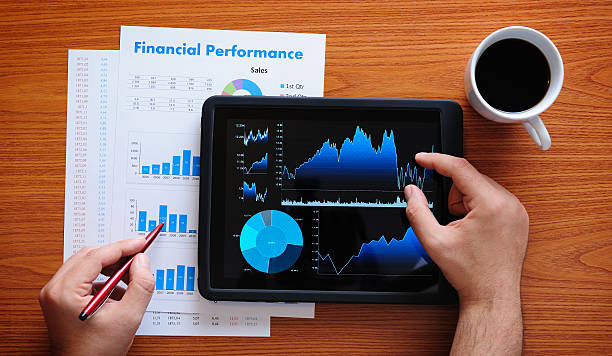The stock market is often seen as a barometer of economic health, with its daily fluctuations reflecting investor sentiment, corporate earnings, geopolitical events, and economic data. Understanding the stock market’s performance on any given day requires a closer look at various factors that drive market movements. Today’s stock market performance is shaped by a variety of forces, ranging from investor reactions to corporate earnings reports to broader economic trends.
Overview of Today’s Stock Market Performance
Today’s stock market is affected by various factors like investor sentiment, earnings reports, global economic data, and geopolitical tensions, leading to a mix of upward and downward movements across different indices.
The S&P 500, Dow Jones Industrial Average, and Nasdaq Composite are the three main indices that provide a snapshot of market performance in the United States. The S&P 500 is a major market indicator with 500 large U.S. companies. The Dow Jones covers 30 blue-chip firms, while the Nasdaq emphasizes tech and growth stocks.
Today, these indices are showing a complex performance. the S&P 500 may rise modestly, driven by strong sector earnings, while the Nasdaq lags due to concerns about tech stocks and interest rates. Conversely, the Dow Jones could climb on robust showings from healthcare, energy, and consumer staples sectors.
Key Drivers of Today’s Stock Market Performance
1. Corporate Earnings Reports
One of the most significant factors influencing today’s stock market performance is the release of quarterly earnings reports from major corporations. Positive earnings reports often drive stock prices higher, especially if the results exceed Wall Street expectations. Conversely, disappointing earnings can lead to declines in stock prices, affecting broader market sentiment.
In today’s market, several high-profile companies are reporting better-than-expected earnings. This has led to increased optimism in certain sectors, such as financials and consumer goods. Strong earnings in these sectors are helping to lift the overall market performance, even if other sectors are underperforming.
2. Economic Data and Indicators
Today’s stock market is influenced by recent and upcoming economic data, like employment figures, inflation rates, and consumer spending, which offer insights into the economy’s health and shape investor expectations.
If the stock market declines due to high inflation concerns, it may prompt the Fed to raise rates. On the other hand, positive economic data like job growth can boost investor confidence and market performance.
3. Interest Rates and Federal Reserve Policies
Interest rates play a crucial role in shaping stock market performance. Rising interest rates typically result in higher borrowing costs, which can reduce consumer spending and corporate profits. Today, market participants are closely monitoring signals from the Federal Reserve regarding interest rate hikes or cuts.
If investors expect Fed to raise rates for inflation, stocks might fall as they turn to safer bonds. Conversely, signs of Fed pausing or reversing tightening could boost stocks. This tug-of-war between growth and inflation concerns is a primary driver of today’s stock market performance.
4. Geopolitical Tensions
Geopolitical events can create volatility in the stock market. Tensions in key global regions or unexpected political events can lead to market sell-offs or spikes in volatility.
Today’s stock market performance may also reflect investor concerns over ongoing geopolitical issues, such as trade relations between major economies, military tensions in certain regions, or uncertainty surrounding global supply chains.
5. Investor Sentiment and Market Psychology
Investor sentiment is a significant factor in daily stock market performance. Market psychology—driven by emotions such as fear, greed, and optimism—can lead to exaggerated price movements in the short term. When investors are feeling bullish, they may be more inclined to buy stocks, pushing prices higher. Conversely, when investor sentiment turns negative, a market correction can occur.
Today, investor sentiment is mixed. While some are optimistic about continued economic growth, others are cautious, wary of potential headwinds such as high inflation and tightening monetary policies. This divergence in sentiment often results in a choppy market performance, where some stocks rally while others experience significant declines.
6. Sector-Specific Performance
Different sectors of the market can perform in unique ways depending on the prevailing economic conditions. For example, defensive sectors like healthcare, utilities, and consumer staples tend to do well during economic downturns because they provide essential goods and services. On the other hand, cyclical sectors such as technology, consumer discretionary, and industrials are more sensitive to economic cycles and may perform better during periods of economic expansion.
Today’s stock market performance is influenced by a mix of sector performances. Technology stocks may be underperforming as investors react to concerns about rising interest rates, while energy stocks may be benefiting from higher oil prices. Meanwhile, sectors like healthcare and consumer staples are holding up well, offering stability to the broader market.
The Impact of Global Events
Stock market performance is not confined to domestic factors alone; international events also play a crucial role. For example, today’s stock market performance may be affected by global developments such as a slowdown in China’s economy, fluctuations in oil prices, or economic policy changes in Europe.
Conclusion
Today’s stock market performance is a result of a complex interplay of corporate earnings, economic data, interest rates, geopolitical events, and investor sentiment. While some sectors are experiencing gains due to positive earnings reports and stable economic data, others are underperforming due to concerns over inflation and rising interest rates. Investors are navigating through a volatile environment, balancing optimism about growth with caution over potential risks. As always, stock market performance is subject to change, influenced by the ever-evolving economic landscape and the actions of both investors and policymakers.

